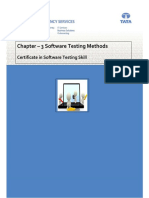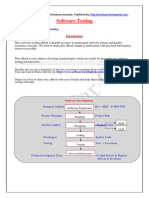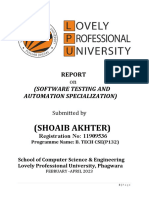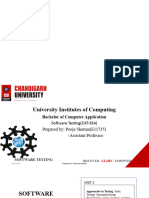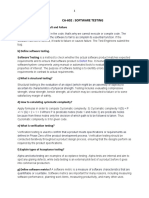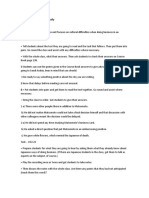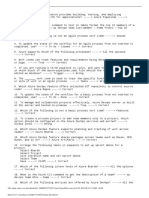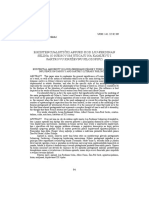0% found this document useful (0 votes)
12 views4 pagesStatic Vs Dynamic Testing
Static and Dynamic Testing are essential techniques in software quality assurance, with Static Testing involving the review of software artifacts without execution, while Dynamic Testing requires executing the software to validate its functionality. Static Testing helps identify issues early in development, reducing costs, whereas Dynamic Testing assesses real-world performance and behavior. A balanced approach combining both methods enhances software quality and user experience.
Uploaded by
sicatej15Copyright
© © All Rights Reserved
We take content rights seriously. If you suspect this is your content, claim it here.
Available Formats
Download as DOCX, PDF, TXT or read online on Scribd
0% found this document useful (0 votes)
12 views4 pagesStatic Vs Dynamic Testing
Static and Dynamic Testing are essential techniques in software quality assurance, with Static Testing involving the review of software artifacts without execution, while Dynamic Testing requires executing the software to validate its functionality. Static Testing helps identify issues early in development, reducing costs, whereas Dynamic Testing assesses real-world performance and behavior. A balanced approach combining both methods enhances software quality and user experience.
Uploaded by
sicatej15Copyright
© © All Rights Reserved
We take content rights seriously. If you suspect this is your content, claim it here.
Available Formats
Download as DOCX, PDF, TXT or read online on Scribd
/ 4





